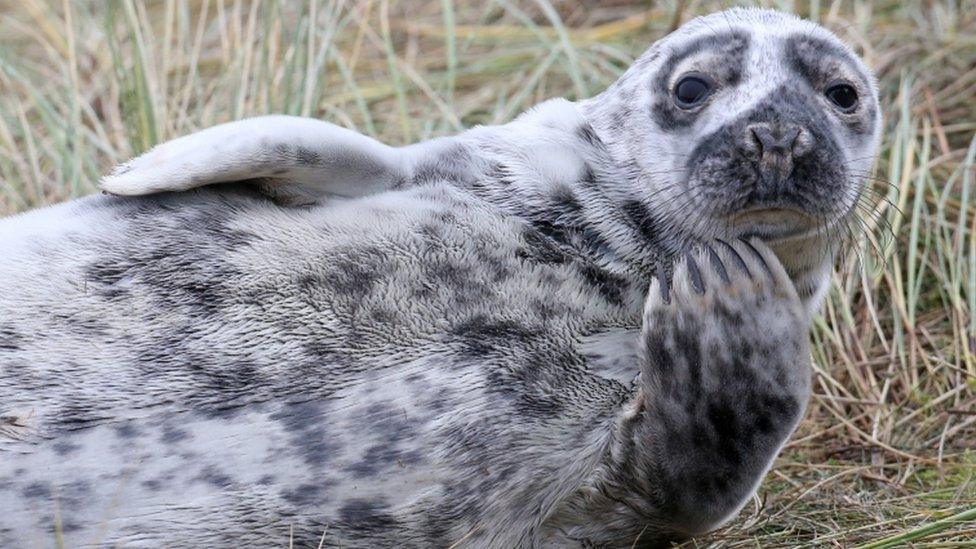Wildlife conservation: Thousand of new seal pups for England's biggest seal colony!
- Published
- comments

England's largest grey seal community is expected to see a record baby boom of 4,000 new arrivals this year!
The colony at the Blakeney National Nature Reserve in Norfolk has grown so much that rangers are having to rethink the way they count the numbers of pups born at the breeding ground!
The first grey seal pup was spotted at the nature reserve in 1988, and since then it has grown to be England's biggest colony for the marine mammals, with numbers increasing from 25 youngsters born in 2001 to 3,399 pups in 2019.
The National Trust - who manage the site - said part of the reason the seals have done so well could be down to changes brought about by the coronavirus lockdown - as fewer people visiting meant fewer disturbances to the colony.
The seals have also benefited from a lack of natural predators on the long shingle spit where they have their young.
The first pup was spotted at the end of October, and they are expecting around 4,000 new arrivals this breeding season.
But these huge numbers being born at Blakeney Point mean it is now almost impossible for rangers to count the number of pups precisely!
How do the seals get counted?
In the past young seals were counted individually by rangers and volunteers walking through where the seals lay, but because there are now so many, it's no longer safe for the animals or the rangers in the busy colony.
Instead this year, numbers of newborns and weaned pups, which have moulted their white fur but will still be much smaller than the adults, will be counted in just one specific area.
The changes in the number of pups recorded in the one area will be used to give an indication of what is happening across the whole colony.
The approach will also give staff the chance to look in-depth at the behaviour of the seals at the site.
National Trust ranger Leighton Newman said, "When the seals first started pupping here it was really important to count the pups to help us monitor the health of the colony.
"More recently, however, the density of the colony has increased hugely and walking through the colony is now not safe for staff or for the seals."
He said changing the way things were done recognised the changes to the colony itself and the techniques available to study it.
Information gathered from the count will be fed into the Sea Mammal Research Unit (SMRU) at St Andrew's University in Scotland, to help estimate how grey seals are breeding for the whole of the UK.
There are an estimated 300,000 grey seals globally, with British and Irish waters supporting 40% of the total population.
Counting the seals only provides a fairly basic overview of the seal colony so we are going to do more in-depth research to better-understand why Blakeney has become such an important habitat, and to look at their behaviour to get a greater understanding of these curious creatures.
The National Trust team is also planning to work with SMRU in 2021, to do a count of the seal colony from the sky.
Next year's aerial survey will aim to draw up an accurate picture of just how large the colony is and see whether by counting only one area, it was possible to infer if the colony was increasing in size.
- Published18 November 2020
- Published16 November 2020
